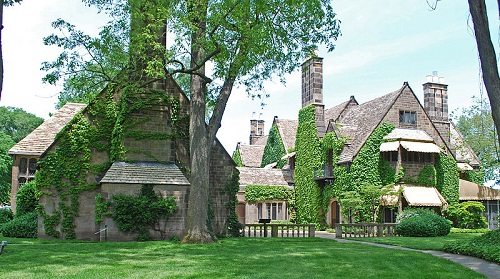
December 19, 2014; Detroit Free Press
In 2013, the Edsel & Eleanor Ford House, located in Grosse Point Shores, Michigan, sold one of its treasured artworks, La Montagne Sainte-Victoire vue du bosquet de Chateau Noir by Paul Cézanne, for $100 million. Even though the sale took place in 2013, this sale is being brought into discussion because of the recent national and international discourse of ethics in selling artwork. The artwork is now one of fifteen artworks that have been sold for $100 million or more, a deaccessioned sale of a long-term heirloom of a historic home at a time when the Detroit Institute of Arts (DIA) fights tooth and nail to avoid the sale of artworks during the City of Detroit’s bankruptcy process.
What is interesting is that the Ford House sale was withheld from the public at this time as not to “cause further problems for the DIA.” What is different with the Edsel & Eleanor Ford House is that this is a nonprofit historic home as opposed to a nonprofit museum. Museums tend to adhere, or should adhere, to the best practices set forth by the Association of Art Museum Directors. However, the Ford House is not an art museum per se, and therefore leaders of the House say the sale of the artwork does not break any ethical standards for historic homes.
Sign up for our free newsletters
Subscribe to NPQ's newsletters to have our top stories delivered directly to your inbox.
By signing up, you agree to our privacy policy and terms of use, and to receive messages from NPQ and our partners.
These historic home priorities may be in contrast with standards set forth for how art museums deaccession works. According to Graham Beal, DIA’s director, typically art museums can use the funds from deaccession to buy more artworks, while other museums (like historic homes such as the Ford House) can use the funds more loosely to reinvest in their collections.
Two weeks ago, the Nonprofit Quarterly explored the ethics behind deaccessioned artwork sales by British museums. Could there be a correlation or road map between these multiple cases of deaccessioned artworks by nonprofits? In the case of the British museums, the artworks were sold mainly to curb financial hardships, which goes against standard ethical policy and led to the revocation of these museums’ accreditation. In the Ford case, the House did not have any debt at the time of the sale and will use the $100 million to create an endowment for preservation, conservation, and restoration of the Home’s overall collection and home maintenance.
Kathleen Mullins, president of the Ford House, said, “This was really a once-in-a-lifetime offer. […] The family thought it was a way to guarantee the estate would be taken care of the way Eleanor would have wanted.”
In that light, it could be seen that the sale was enacted with the mission of the historic home kept in mind. As we continue through a period when arts and cultural nonprofits (amongst many others) face greater financial difficulty along with heavier scrutiny when it comes to the public and accessibility, we will continue to see the “ethics” question raised when major artworks and collections are deaccessioned.—Jennifer Swan











